NOTE: Please be sure that your vehicle can be towed 4 wheels down. (Follow the maintenance schedule provided in the owner's manual)
RV towing requires careful consideration of several factors to ensure a safe and enjoyable trip. The process involves more than just attaching a vehicle to your RV. You must consider the towing capacity of your RV, the weight of the vehicle being towed, and the right type of hitch to use. Learning these basics is vital for anyone venturing into RV towing, from first-time RV owners to seasoned travelers.
Blue Ox Tow Bars: Your Reliable Towing Partner
When it comes to RV towing, the quality of your equipment cannot be overstated. This is where Blue Ox Tow Bars excels. Specializing in Tow Bars, Tow Bars Parts & Accessories, Blue Ox offers a range of products designed to make your towing experience as safe and hassle-free as possible. Their tow bars are known for their durability, ease of use, and ability to handle various towing situations. Whether you're towing a small car or a large trailer, Blue Ox has the perfect solution to meet your needs, ensuring your journey is safe every mile.
Understanding RV Towing
RV towing, also known as flat or dinghy, involves pulling a second vehicle behind your RV or towing vehicle. This method provides the convenience of having a separate car at your destination without needing a trailer. To engage in RV towing, you must ensure that the towed vehicle is properly equipped and that you have the right towing equipment in place.
One of the primary considerations in RV towing is whether your RV or towing vehicle can tow another vehicle safely. You'll need to check your RV's towing capacity, which the manufacturer typically specifies. This capacity depends on various factors, including your RV's size, weight, and engine power. It's crucial to stay within these limits to ensure your safety and your vehicles' well-being.
Another essential aspect of understanding RV towing is recognizing the various methods of flat towing. The two most common methods are tow bar or a tow dolly. A tow bar connects the front of the towed vehicle to the back of the RV, allowing all wheels of the towed automobile to remain on the ground. On the other hand, a tow dolly lifts the towed vehicle's front wheels while the rear wheels roll freely. Each method has advantages and considerations, so choosing the one that best suits your needs and preferences is important.
Key Components of RV Towing
To ensure the safety and effectiveness of RV towing, it's crucial to understand the key components involved in the process. These components work together to create a secure towing setup:
Tow Bar: The tow bar is the primary link between your RV and the towed vehicle. It needs to be properly selected based on your RV's towing capacity and the weight of the towed vehicle. Tow bars come in various types, including rigid and non-rigid options, each with advantages and limitations.
Base Plates: Base plates are vehicle-specific and are installed on the towed vehicle to connect it to the tow bar. They provide a secure attachment point and are essential for safe towing.
Safety Cables: Safety cables are a critical safety feature that acts as a backup in case the primary attachment fails. They are designed to keep the towed vehicle connected to the RV in an emergency.
Towed Vehicle Wiring.
Supplemental Braking System: In many jurisdictions, an auxiliary braking system is required when towing a vehicle over a certain weight. This system helps the RV's brakes handle the additional load of the towed vehicle, improving braking performance and safety.
Towing Safety Tips
Towing safety is paramount when you're hitting the road with a towed vehicle in tow. Whether you're an RV enthusiast or a trucking company owner, adhering to towing safety tips can make all the difference in ensuring a smooth and incident-free journey.
Maintaining a safe following distance is another critical aspect of towing safety. The added weight from the towed vehicle increases the time it takes to come to a complete stop. To avoid rear-end collisions, keep a sufficient distance between your RV and the vehicles in front of you. A general rule of thumb is to double the distance you typically maintain without a towed vehicle.
Braking is vital to towing safety, and having the right braking system in place is essential. Many jurisdictions require a supplemental braking system if your towed vehicle exceeds certain weight thresholds. These systems provide additional braking power to help your RV or towing vehicle come to a stop safely. Ensure your braking system is in good working order and properly adjusted before hitting the road.
Sway control systems play a significant role in towing safety, particularly on highways with crosswinds or when passing large vehicles. These systems help prevent the towed vehicle from swaying or fishtailing, enhancing stability and control. Properly set up and maintained sway control systems can make towing a much more secure and comfortable experience.
Tire maintenance cannot be overstated when it comes to towing safety. Check the tire pressure of both your RV or towing vehicle and the towed vehicle regularly. Underinflated tires can reduce stability and control, while overinflated tires may result in a harsher ride. Maintaining proper tire pressure is crucial for safe towing.
Legal and Regulatory Considerations
Navigating the legal and regulatory landscape of towing is essential to ensure you comply with local, state, and national laws. These considerations vary from jurisdiction to jurisdiction, so it's necessary to research and understand the rules that apply to your towing situation.
Speed limits can differ for vehicles engaged in towing, so it's crucial to be aware of these restrictions. Many areas impose lower speed limits for towing vehicles to ensure safety on the road. Adhering to these limits keeps you within the law and enhances safety.
Lighting and visibility requirements are also essential legal considerations. Towed vehicles typically require additional lighting, including brake lights, turn signals, and taillights, to make them visible to other drivers. Ensure your towed vehicle complies with all lighting regulations to avoid legal issues and enhance safety.
Some jurisdictions may require safety equipment such as safety chains or breakaway systems. These devices provide additional security in case of towing equipment failure and are often mandated for heavier loads. Always verify the specific requirements in your area to avoid potential fines or legal complications.
Weight limits for towing can vary widely based on the jurisdiction and the type of vehicle you're towing. Exceeding these limits can lead to fines and safety hazards. Understand the towing capacity of your RV or towing vehicle and ensure that your towed vehicle falls within the acceptable weight range.
RV Towing Weight Limits
Exceeding limits can lead to a host of problems, including poor handling, decreased braking efficiency, and potential damage to your RV or towing vehicle. Therefore, it's crucial to familiarize yourself with the weight limits associated with your specific RV or towing vehicle.
The manufacturer typically determines weight limits and can vary significantly depending on the vehicle's make, model, and configuration. These limits are specified in the owner's manual and must be followed to prevent accidents and equipment failures. Exceeding the towing weight limit can strain your RV's engine, transmission, suspension, and brakes, potentially leading to costly repairs and reduced safety.
To determine the towing weight limits for your RV or towing vehicle, consult the owner's manual provided by the manufacturer. This document should contain detailed information about the maximum allowable towing capacity and any specific guidelines or recommendations for towing. Pay close attention to the Gross Vehicle Weight Rating (GVWR), the maximum weight your RV or towing vehicle can safely carry, including passengers and cargo.
Remember that the towing weight limit also applies to any towed vehicle or trailer you plan to hitch. Therefore, it's essential to calculate the total weight of the towed vehicle and any additional cargo you intend to carry. Staying within these weight limits is crucial for maintaining control, stability, and safety during your journey.
Recommended Towing Speeds
The recommended towing speeds can vary depending on your specific RV or towing vehicle, road conditions, and local regulations. However, adhering to a safe towing speed is essential for ensuring a smooth and secure journey.
In general, slower speeds are advisable when towing. Towing adds extra weight and length to your RV or towing vehicle, increasing stopping distances and affecting overall maneuverability. Driving at lower speeds allows you to react more effectively to sudden traffic or road conditions changes.
Many RV manufacturers and towing equipment suppliers recommend staying within the range of 55 to 65 miles per hour (88 to 104 kilometers per hour) when towing. This speed range is considered optimal for balancing safety and fuel efficiency. However, it's crucial to consult your owner's manual or towing equipment guidelines for specific recommendations tailored to your setup.
Always adapt your driving speed to the road conditions and weather. Reduce your speed in adverse conditions like rain, snow, ice, or strong winds. Uphill climbs, and downhill descents may also require adjustments to your speed to maintain control and stability.
In some areas, speed limits may be lower for vehicles engaged in towing, so obey local traffic laws and regulations. Please do so to avoid fines and legal complications.
Choosing the Right RV Towing Equipment
The right equipment enhances safety and contributes to the overall ease and comfort of your journey. When choosing towing equipment, several key factors need to be considered.
First and foremost, assessing the towing capacity of your RV or towing vehicle is essential. The manufacturer determines this capacity and specifies the maximum weight that your car can safely tow. Exceeding this capacity can lead to equipment failure and safety hazards. Ensure that the towing equipment you select, such as tow bars, base plates, and hitch receivers, matches your RV's towing capacity.
Consider the type of towed vehicle you plan to use. Some towing equipment is vehicle-specific and may require custom installations or modifications. It's crucial to choose equipment compatible with your towed vehicle's make and model to ensure a secure and safe attachment. Many manufacturers provide compatibility guides to help you make the right choice.
Sway control systems are essential for RV towing equipment, particularly for larger or longer RV setups. These systems help prevent the towed vehicle from swaying or fishtailing, enhancing stability and control. When selecting a sway control system, ensure it suits your RV's size and weight to maximize its effectiveness.
Consider ease of installation and use when choosing towing equipment. Some products, like tow bars with quick-connect systems, offer convenience and simplicity in attaching and detaching the towed vehicle. Additionally, look for equipment that is user-friendly and comes with clear instructions to streamline the setup process.
Durability and build quality are essential factors to assess. Towing equipment should be robust and withstand the stresses and forces exerted during towing. Opt for equipment made from high-quality materials and backed by reputable manufacturers to ensure reliability and longevity.
Maintenance and Inspection
Before each trip, thoroughly inspect all towing components, including tow bars, base plates, safety cables, and sway control systems.
Check for any wear, damage, or corrosion on all towing equipment. Pay special attention to connection points, hinges, and moving parts. Any compromised components should be replaced promptly to prevent equipment failure on the road.
Lubricate moving parts as the manufacturer recommends to maintain smooth operation and prevent premature wear. Proper lubrication ensures that components like tow bar arms and hitch receivers function correctly.
Inspect safety cables and chains for any signs of fraying or weakening. Safety cables are essential backup devices and should always be in good condition. Replace any damaged or worn cables immediately.
Verify that the electrical and lighting connections between your RV and the towed vehicle are secure and functional. Ensure that all lights, including brake lights, turn signals, and taillights, are working correctly to maintain visibility and compliance with legal regulations.
Experience the Best in RV Towing with Blue Ox
For all your RV towing needs, turn to Blue Ox Tow Bars. As a trusted source for top-quality Tow Bars, Tow Bars Parts & Accessories, we are dedicated to providing you with the best products and expert advice. Whether you're an RV owner or a business looking for reliable towing solutions, our extensive range of products is designed to meet your unique requirements. Visit us at Blue Ox Tow Bars, and let us help you make your next towing experience safe, efficient, and stress-free.

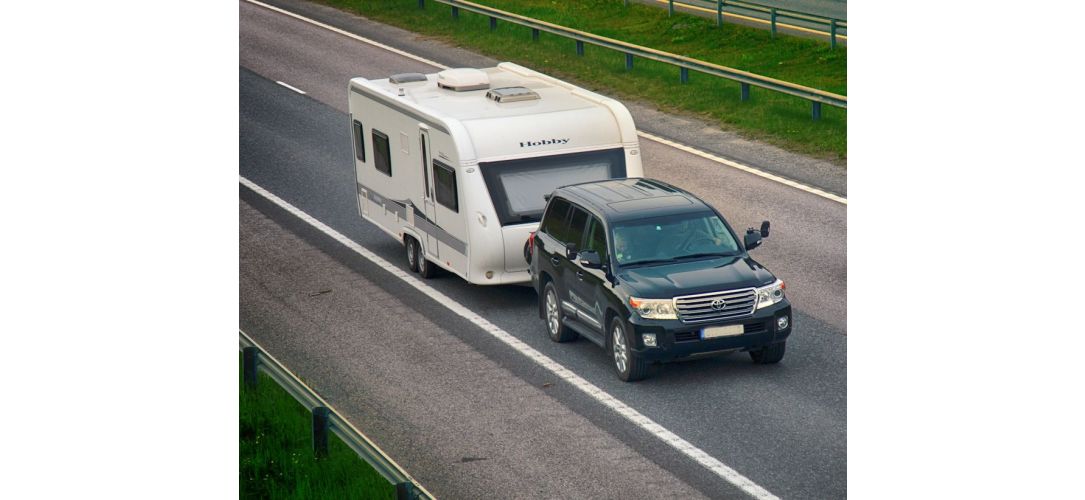

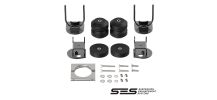
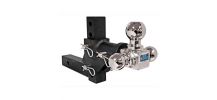
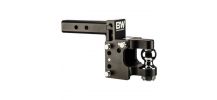
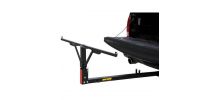
 Rigid Hitch Inc.
Rigid Hitch Inc.
